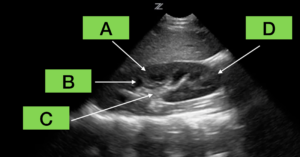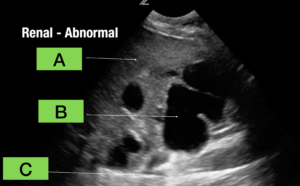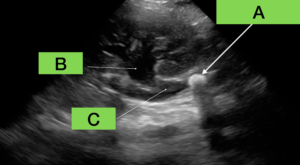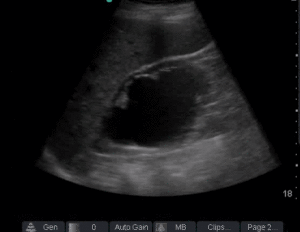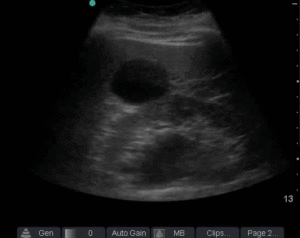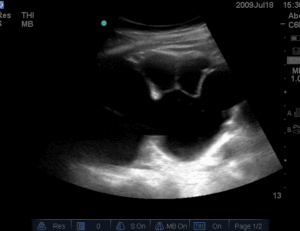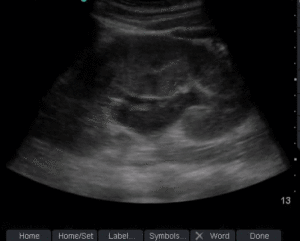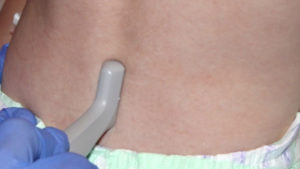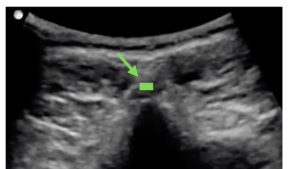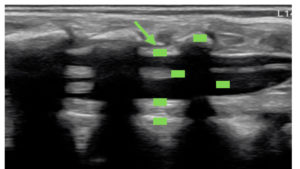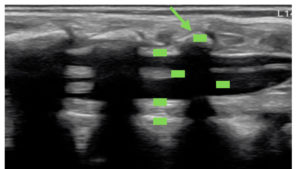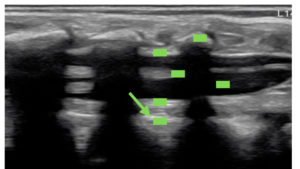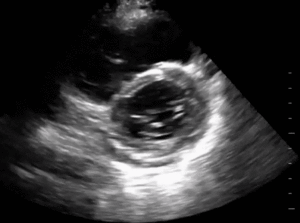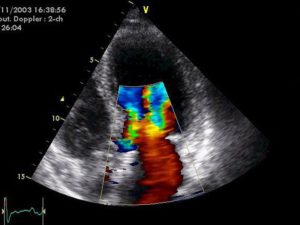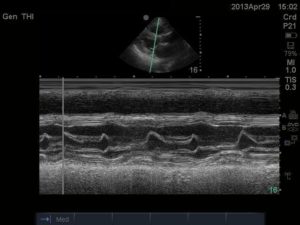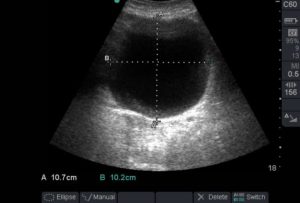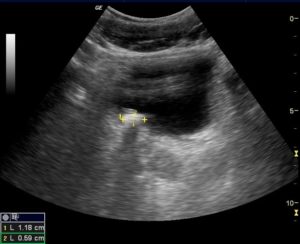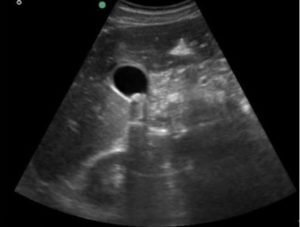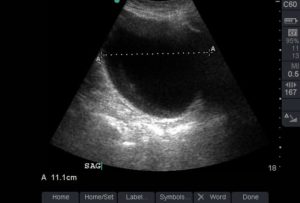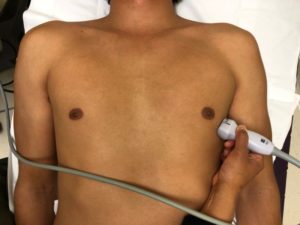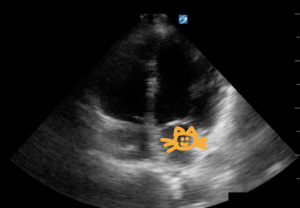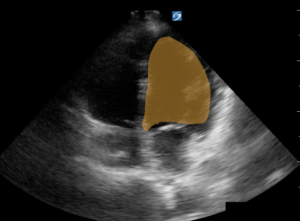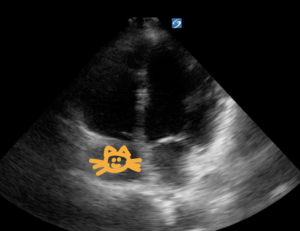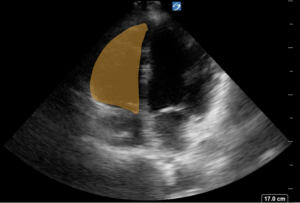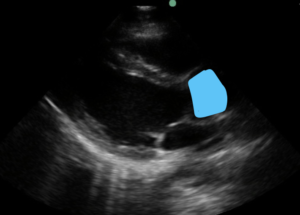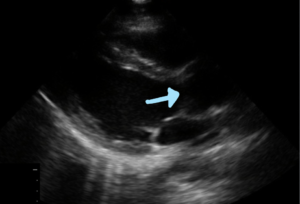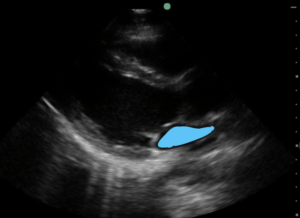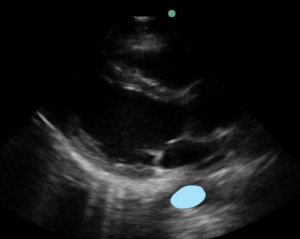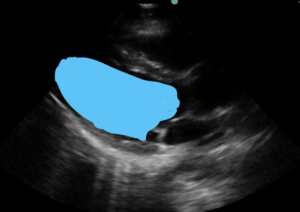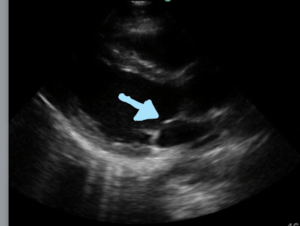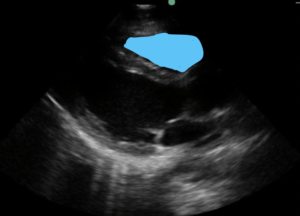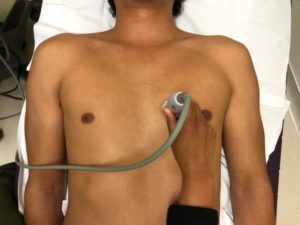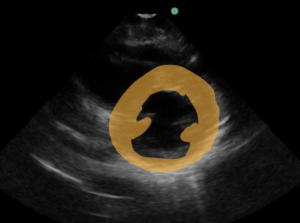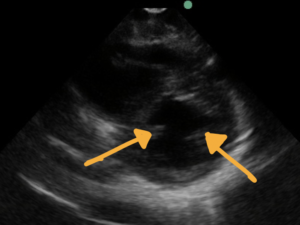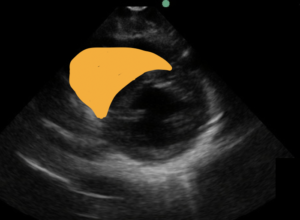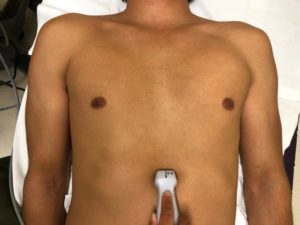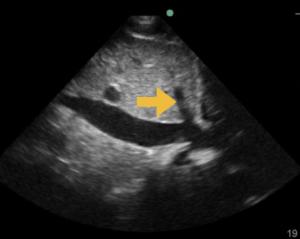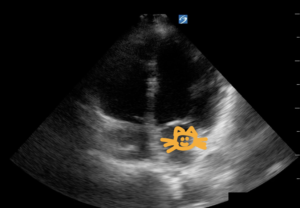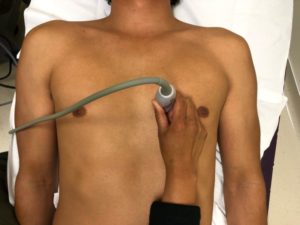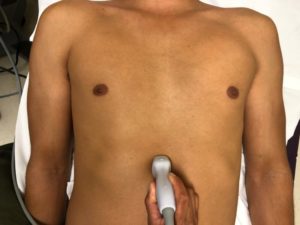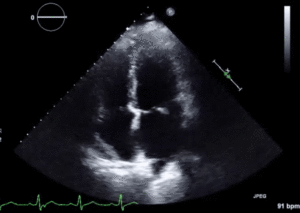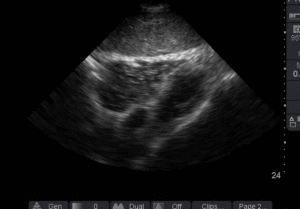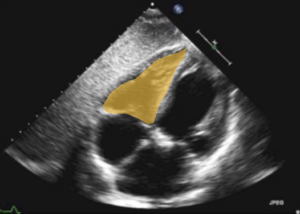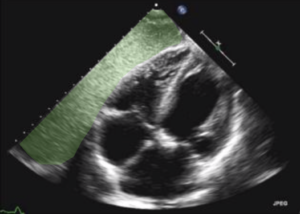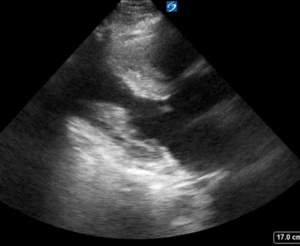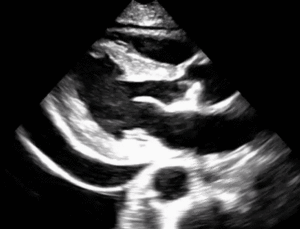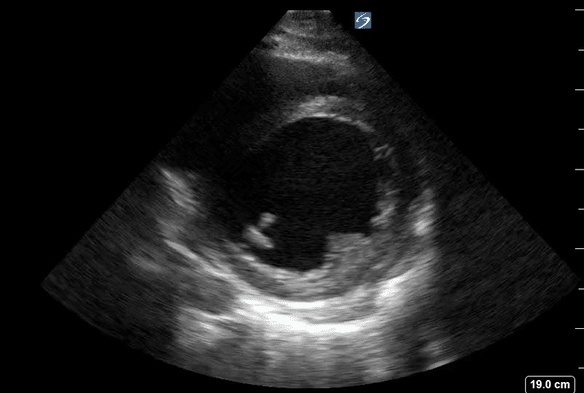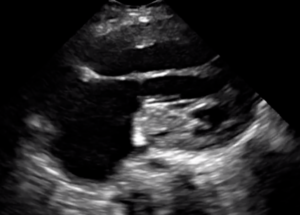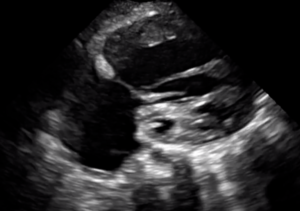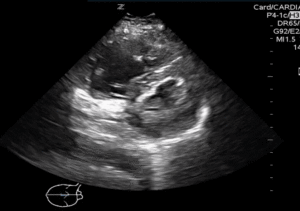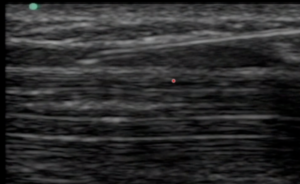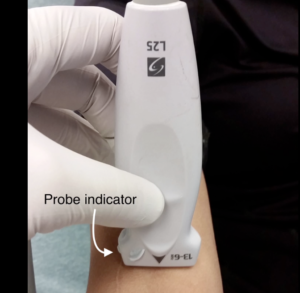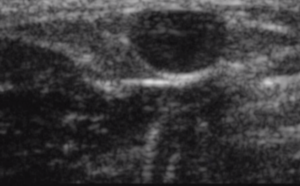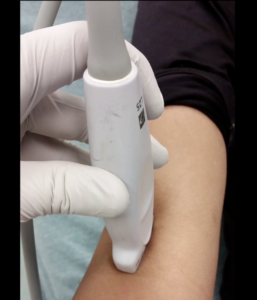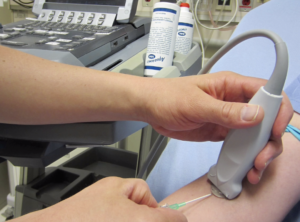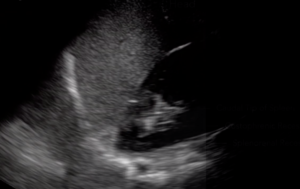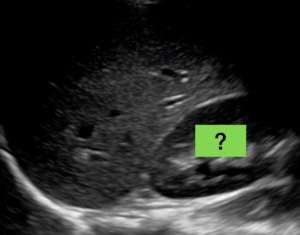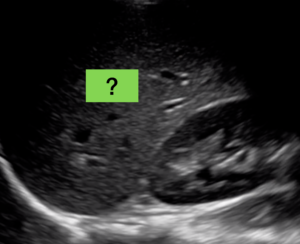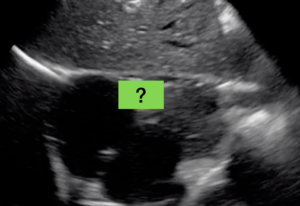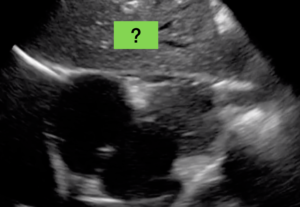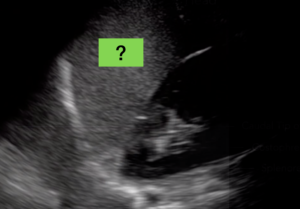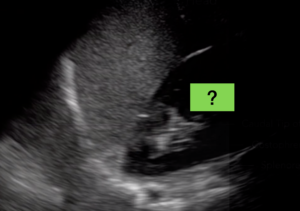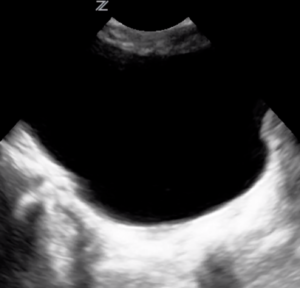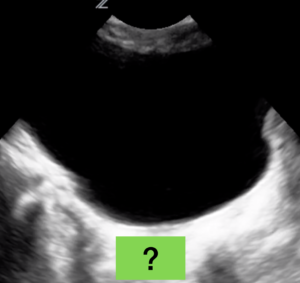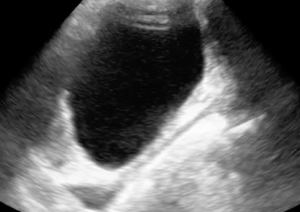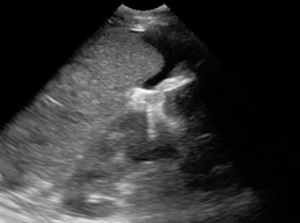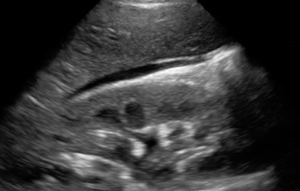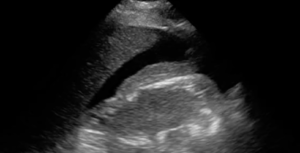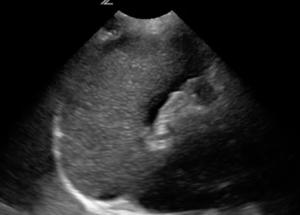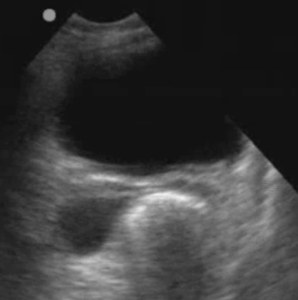Question Bank – Pediatric Residency Essentials
Quiz Summary
0 of 247 Questions completed
Questions:
Information
You have already completed the quiz before. Hence you can not start it again.
Quiz is loading…
You must sign in or sign up to start the quiz.
You must first complete the following:
Results
Results
0 of 247 Questions answered correctly
Your time:
Time has elapsed
You have reached 0 of 0 point(s), (0)
Earned Point(s): 0 of 0, (0)
0 Essay(s) Pending (Possible Point(s): 0)
Categories
- Not categorized 0%
- Basics 0%
- 1
- 2
- 3
- 4
- 5
- 6
- 7
- 8
- 9
- 10
- 11
- 12
- 13
- 14
- 15
- 16
- 17
- 18
- 19
- 20
- 21
- 22
- 23
- 24
- 25
- 26
- 27
- 28
- 29
- 30
- 31
- 32
- 33
- 34
- 35
- 36
- 37
- 38
- 39
- 40
- 41
- 42
- 43
- 44
- 45
- 46
- 47
- 48
- 49
- 50
- 51
- 52
- 53
- 54
- 55
- 56
- 57
- 58
- 59
- 60
- 61
- 62
- 63
- 64
- 65
- 66
- 67
- 68
- 69
- 70
- 71
- 72
- 73
- 74
- 75
- 76
- 77
- 78
- 79
- 80
- 81
- 82
- 83
- 84
- 85
- 86
- 87
- 88
- 89
- 90
- 91
- 92
- 93
- 94
- 95
- 96
- 97
- 98
- 99
- 100
- 101
- 102
- 103
- 104
- 105
- 106
- 107
- 108
- 109
- 110
- 111
- 112
- 113
- 114
- 115
- 116
- 117
- 118
- 119
- 120
- 121
- 122
- 123
- 124
- 125
- 126
- 127
- 128
- 129
- 130
- 131
- 132
- 133
- 134
- 135
- 136
- 137
- 138
- 139
- 140
- 141
- 142
- 143
- 144
- 145
- 146
- 147
- 148
- 149
- 150
- 151
- 152
- 153
- 154
- 155
- 156
- 157
- 158
- 159
- 160
- 161
- 162
- 163
- 164
- 165
- 166
- 167
- 168
- 169
- 170
- 171
- 172
- 173
- 174
- 175
- 176
- 177
- 178
- 179
- 180
- 181
- 182
- 183
- 184
- 185
- 186
- 187
- 188
- 189
- 190
- 191
- 192
- 193
- 194
- 195
- 196
- 197
- 198
- 199
- 200
- 201
- 202
- 203
- 204
- 205
- 206
- 207
- 208
- 209
- 210
- 211
- 212
- 213
- 214
- 215
- 216
- 217
- 218
- 219
- 220
- 221
- 222
- 223
- 224
- 225
- 226
- 227
- 228
- 229
- 230
- 231
- 232
- 233
- 234
- 235
- 236
- 237
- 238
- 239
- 240
- 241
- 242
- 243
- 244
- 245
- 246
- 247
- Current
- Review
- Answered
- Correct
- Incorrect
-
Question 1 of 247
1. Question
True or False. There is minimal evidence that of point of care renal ultrasound in children improves clinical outcomes.
CorrectIncorrect -
Question 2 of 247
2. Question
Point of care renal ultrasound can be used to visualize which of the following renal pathologies in children? Check all that apply.
CorrectIncorrect -
Question 3 of 247
3. Question
In a 2015 case series of 5 pediatric patients with renal colic published in the Journal of Emergency Medicine, Ng et al demonstrated that renal POCUS in these patients was associated with:
CorrectIncorrect -
Question 4 of 247
4. Question
In an article published in 2020 in the Ultrasound Journal, Sibley et al. evaluated the accuracy of point of care ultrasound in the detection of hydronephrosis by emergency residents and attendings in 413 adults with renal colic. Which of the following statements about the conclusions from this paper are TRUE:
CorrectIncorrect -
Question 5 of 247
5. Question
In an article published in 2020 in the Ultrasound Journal, Sibley et al. evaluated the accuracy of point of care ultrasound in the detection of hydronephrosis by emergency residents and attendings in 413 adults with renal colic. Which of the following statements about the conclusions from this paper are TRUE:
CorrectIncorrect -
Question 6 of 247
6. Question
True or False. The optimal transducer for pediatric renal scanning is the linear probe because it generates a low frequency sound wave which enables adequate visualization of intra-abdominal organs.
CorrectIncorrect -
Question 7 of 247
7. Question
True or False. The optimal transducer for pediatric renal scanning is the curvilinear probe because it generates a low frequency sound wave which enables adequate visualization of intra-abdominal organs.
CorrectIncorrect -
Question 8 of 247
8. Question
True or False. Both Curvilinear and Phased Array probes can be used for pediatric adolescent renal ultrasound.
CorrectIncorrect -
Question 9 of 247
9. Question
What is the optimal position for renal ultrasound scanning?
CorrectIncorrect -
Question 10 of 247
10. Question
“Knuckles to the bed” is used to optimally visualize what anatomical structures?
CorrectIncorrect -
Question 11 of 247
11. Question
CorrectIncorrect -
Question 12 of 247
12. Question
What image is generated by the transmission of sound waves through a medium leading to few returning sound waves to the ultrasound probe?
CorrectIncorrect -
Question 13 of 247
13. Question
CorrectIncorrect -
Question 14 of 247
14. Question
CorrectIncorrect -
Question 15 of 247
15. Question
CorrectIncorrect -
Question 16 of 247
16. Question
By definition, what is considered mild (grade 1) hydronephrosis?
CorrectIncorrect -
Question 17 of 247
17. Question
By definition, what is considered moderate hydronephrosis?
CorrectIncorrect -
Question 18 of 247
18. Question
By definition, what is considered severe hydronephrosis?
CorrectIncorrect -
Question 19 of 247
19. Question
True or False. Hydration status has no impact on the presence or absence of hydronephrosis therefore the absence of hydronephrosis rules out post-renal obstruction regardless of hydration status.
CorrectIncorrect -
Question 20 of 247
20. Question
Simple cysts have which of the following features?
CorrectIncorrect -
Question 21 of 247
21. Question
Simple cysts have which of the following features?
CorrectIncorrect -
Question 22 of 247
22. Question
Complex cysts have which of the following features?
CorrectIncorrect -
Question 23 of 247
23. Question
True or False. Hydronephrosis must by definition involve dilation of the renal pelvis.
CorrectIncorrect -
Question 24 of 247
24. Question
True or False. Hydronephrosis may begin as a cyst in the renal cortex and progress to involve the renal pelvis.
CorrectIncorrect -
Question 25 of 247
25. Question
CorrectIncorrect -
Question 26 of 247
26. Question
CorrectIncorrect -
Question 27 of 247
27. Question
CorrectIncorrect -
Question 28 of 247
28. Question
CorrectIncorrect -
Question 29 of 247
29. Question
True or False. A linear probe is useful to visualize the kidneys between the ribs.
CorrectIncorrect -
Question 30 of 247
30. Question
Which probe is best used to visualize the kidneys in children due to its small footprint?
CorrectIncorrect -
Question 31 of 247
31. Question
Rib shadows pose a challenge to adequately visualize the kidneys by ultrasound. Which techniques help to better visualize the kidneys?
CorrectIncorrect -
Question 32 of 247
32. Question
Which of the following findings is hyperechoic?
CorrectIncorrect -
Question 33 of 247
33. Question
Which findings are hypoechoic or anechoic? Mark all that apply.
CorrectIncorrect -
Question 34 of 247
34. Question
A 15 y/o patient with a history of known kidney stones presents to your clinic with acute flank pain and hematuria. He reports he has been vomiting throughout the night and is only voiding very small amounts of dark urine. You perform a bedside ultrasound obtaining longitudinal and transverse views of the kidneys and find no hydronephrosis. What next step can be used to improve POCUS sensitivity for a suspected obstructing renal stone?
CorrectIncorrect -
Question 35 of 247
35. Question
CorrectIncorrect -
Question 36 of 247
36. Question
True or False. A transverse view is helpful to visualize the proximal ureter to evaluate for proximal ureteral obstructing stone.
CorrectIncorrect -
Question 37 of 247
37. Question
CorrectIncorrect -
Question 38 of 247
38. Question
CorrectIncorrect -
Question 39 of 247
39. Question
A 15 year old male presents with acute right sided flank pain to a local health clinic. There are limited lab tests and imaging on site. You are the pediatrician on call and consulted. You note that the patient has no prior history of known structural renal disease. The health provider calling you performs a bedside ultrasound as an extension of their physical exam and sees the above finding.
The ultrasound findings above raise clinical suspicion for which of the following diagnoses?
CorrectIncorrect -
Question 40 of 247
40. Question
To appropriately obtain a bladder volume, you must obtain a total of 3 measurements in two separate axis. True or False.
CorrectIncorrect -
Question 41 of 247
41. Question
True or False. Calculating bladder volume is an estimation because the shape of bladders are variable. A commonly used formula is length, width x height x .7 = bladder volume.
CorrectIncorrect -
Question 42 of 247
42. Question
To manually calculate approximate bladder volume, what is the generally agreed upon coefficient? [Bladder Volume = (Length x Width x Height ) x Coefficient]
CorrectIncorrect -
Question 43 of 247
43. Question
Pediatric ultrasound guided lumbar puncture is difficult for all of the reasons except?
CorrectIncorrect -
Question 44 of 247
44. Question
In the retrospective review by Pierce et al. published in 2018 in Pediatric Radiology, what percentage of lumbar punctures success was achieved when performed with ultrasound guidance?
CorrectIncorrect -
Question 45 of 247
45. Question
In the randomized controlled trial by Zummer et al., published in the American Journal of Emergency Medicine in 2021, researchers compared ultrasound-assisted lumbar puncture vs. landmark based lumbar puncture. Which of the following statements are true about what they found?
CorrectIncorrect -
Question 46 of 247
46. Question
True or False. The paper published by Ferre et al. in the American Journal of Emergency Medicine (2007) demonstrated that ED physicians can easily obtain ultrasound images of anatomical landmarks relevant to lumbar puncture.
CorrectIncorrect -
Question 47 of 247
47. Question
An Ultrasound Guided Lumbar Puncture procedure is difficult for all of the the following reasons except?
CorrectIncorrect -
Question 48 of 247
48. Question
True or False. In the Journal of Emergency Medicine, Kim et al.’s study on ultrasound assisted LP in pediatric emergency medicine showed that ultrasound-assisted LP led no significant improvement in provider confidence in the identification of insertion points when compared to traditional landmark technique.
CorrectIncorrect -
Question 49 of 247
49. Question
Which of the following is FALSE about the literature on pediatric ultrasound assisted lumbar puncture?
CorrectIncorrect -
Question 50 of 247
50. Question
What is the preferred probe to use for pediatric ultrasound assisted lumbar puncture?
CorrectIncorrect -
Question 51 of 247
51. Question
For ultrasound guided lumbar puncture in children, what is the appropriate initial depth to set the machine?
CorrectIncorrect -
Question 52 of 247
52. Question
In children, ultrasound guided lumbar puncture is performed using what type of frequency probe?
CorrectIncorrect -
Question 53 of 247
53. Question
Ultrasound guided lumbar puncture is performed with what type of guidance?
CorrectIncorrect -
Question 54 of 247
54. Question
CorrectIncorrect -
Question 55 of 247
55. Question
An ultrasound of the lumbar spine is shown. What anatomical landmark is indicated by the green arrow?
CorrectIncorrect -
Question 56 of 247
56. Question
An ultrasound image of the lumbar spine is shown. The green arrow in the image is pointing to what part of the spine?
CorrectIncorrect -
Question 57 of 247
57. Question
The above image is obtained when performing an ultrasound assisted LP. Which axis is shown in the above image?
CorrectIncorrect -
Question 58 of 247
58. Question
Ultrasound of the lumbar spine is shown. What structure is indicated by the green arrow in the image?
CorrectIncorrect -
Question 59 of 247
59. Question
CorrectIncorrect -
Question 60 of 247
60. Question
What pearls are helpful when performing an US Guided Lumbar Puncture? Mark all that apply.
CorrectIncorrect -
Question 61 of 247
61. Question
Knowledge of spine anatomy is important to identify the spinous process and intervertebral space. Which of the following is a hyperechoic structure with shadowing that is often mistaken for the spinous process?
CorrectIncorrect -
Question 62 of 247
62. Question
You attempt ultrasound guided lumbar puncture in a patient with large body habitus and nonpalpable landmarks, but are unable to visualize the lumbar anatomy as the spinous processes are too deep for the waves of the linear transducer to penetrate. What type of probe is most appropriate to try next?
CorrectIncorrect -
Question 63 of 247
63. Question
A patient presents with erythema, warmth, and severe tenderness in her left thigh with a low grade fever. Here is your POCUS. What is the next best step in her care?
CorrectIncorrect -
Question 64 of 247
64. Question
After you have made the diagnosis of abscess, what are the benefits of POCUS for an I&D procedure? Select all that apply.
CorrectIncorrect -
Question 65 of 247
65. Question
A patient presents with erythema, warmth, and tenderness on her left leg. She has a low grade fever. Above is her POCUS of the area in question. What is the best next step in her management?
CorrectIncorrect -
Question 66 of 247
66. Question
On history and physical exam, you are unsure if a patient has just cellulitis or actually has an early abscess in their inguinal area. The patient is not excited about the prospect of having an I&D. Your POCUS scan results are above. What is the next best course of action for this patient?
CorrectIncorrect -
Question 67 of 247
67. Question
What is the best way to scan infected skin/soft tissue to differentiate cellulitis from abscess?
CorrectIncorrect -
Question 68 of 247
68. Question
When measuring a cutaneous abscess on ultrasound, you are able to easily see the superficial aspect of the abscess, but are unable to discern the location of the deeper edge of the abscess cavity, where the image has poorer resolution. Which of the following troubleshooting steps can you take?
CorrectIncorrect -
Question 69 of 247
69. Question
Based on available evidence, how does POCUS compare with traditional landmark-based techniques for diagnosis and treatment of peritonsillar abscess? Select all that apply.
CorrectIncorrect -
Question 70 of 247
70. Question
When faced with a diagnosis of abscess vs cellulitis, what is the risk of missing the diagnosis of abscess? Select all that apply.
CorrectIncorrect -
Question 71 of 247
71. Question
True or False: For the diagnosis of cutaneous abscess, the sensitivity of POCUS is comparable and in some cases superior to that of a CT scan.
CorrectIncorrect -
Question 72 of 247
72. Question
In the diagnosis of cutaneous abscess, the sensitivity of the physical exam is ____, and the sensitivity of POCUS is _____.
CorrectIncorrect -
Question 73 of 247
73. Question
A patient presents for concern for a splinter on the lateral edge of their foot. Because of the awkward angle you find you are unable to get good images of this narrow area. Which of the following troubleshooting measures would help visualize this patient’s extremity?
CorrectIncorrect -
Question 74 of 247
74. Question
A patient comes in with a chief complaint of foot pain after having stepped barefoot on a foreign body and they feel that it is embedded in their foot. The patient is morbidly obese and has significant soft tissue on the plantar surface of their foot, limiting your physical exam. See his POCUS clip here:
Which foreign bodies are NOT typically visible on X-ray but ARE better visualized on ultrasound? Select all that apply.
CorrectIncorrect -
Question 75 of 247
75. Question
A 47 y/o male with a history of peptic ulcer disease presents with worsening pain in the right upper quadrant after meals. An H2 blocker and PPI provide him with no relief. His clinician performs the ultrasound below. Applying pressure to the probe causes him more pain. What artifact present below confirms the patient’s diagnosis?
CorrectIncorrect -
Question 76 of 247
76. Question
The presence of the liver superior to the diaphragm is an example of what type of artifact?
CorrectIncorrect -
Question 77 of 247
77. Question
Among the artifacts visible in the image below, which artifact explains why the anterior wall of the gallbladder is measured to determine gallbladder wall thickness?
CorrectIncorrect -
Question 78 of 247
78. Question
A 23 year old male is involved in an accident falling forward off of his bicycle hitting his abdomen on the handlebars. He is in severe abdominal pain and has visible bruising over his left flank and around his umbilicus. You perform an ultrasound exam which shows free fluid in the left upper quadrant between the diaphragm and the spleen concern for a splenic injury. How do you describe the appearance of fluid on an ultrasound and what happens to sound waves that create this appearance?
CorrectIncorrect -
Question 79 of 247
79. Question
In the gallbladder the gallstone appears _______ compared to its surrounding due to the _______ number of sound waves returning to the ultrasound probe.
CorrectIncorrect -
Question 80 of 247
80. Question
Which of the following descriptions of ultrasound frequency and probe selection is most accurate?
CorrectIncorrect -
Question 81 of 247
81. Question
A 45 y/o female is suffering from abdominal pain after meals. What ultrasound mode is used to scan her gallbladder in the image below?
CorrectIncorrect -
Question 82 of 247
82. Question
A 45 y/o with a history of kidney stones presents with acute onset of L flank pain. A renal ultrasound shows finding consistent with mild hydronephrosis. To determine whether or not what appears to be hydronephrosis are actually the renal vessels, what machine mode is used below to troubleshoot this potential pitfall?
CorrectIncorrect -
Question 83 of 247
83. Question
The following image shows a cross section of the heart in the parasternal long view. Increasing the gain would result in a ____________.
CorrectIncorrect -
Question 84 of 247
84. Question
A 45 year old female with obesity is experiencing pain in the right upper quadrant after meals. You decide to do an ultrasound to look for gallstones. What are the characteristics of the probe that will allow you to best visualize the gallbladder?
CorrectIncorrect -
Question 85 of 247
85. Question
How much did you learn in this lesson?
CorrectIncorrectHint
The most.
-
Question 86 of 247
86. Question
The following image of the heart in the apical 4 chamber window is in which mode?
CorrectIncorrect -
Question 87 of 247
87. Question
A 23 year old male fell off a bicycle and complains of rib pain, shortness of breath and abdominal pain. A focused assessment of sonography in trauma is performed (FAST exam). Which artifact seen above the diaphragm suggests that the patient does NOT have a hemothorax?
CorrectIncorrect -
Question 88 of 247
88. Question
The following image is taken in the sagittal plane in the abdominal right upper quadrant. In this view, the sonographer is evaluating Morrison’s Pouch, the space between the liver and kidney, to evaluate for free fluid concerning for hemoperitoneum in the setting of trauma. In which direction, relative to the patient, is the probe marker pointing?
CorrectIncorrect -
Question 89 of 247
89. Question
To evaluate for a DVT, the linear probe is used in the popliteal region. In the following video, what probe movement is used to rule out the presence of a popliteal DVT?
CorrectIncorrect -
Question 90 of 247
90. Question
The more sound waves that return to the probe the brighter the image.
CorrectIncorrect -
Question 91 of 247
91. Question
Fluid transmits sound waves resulting in a hyperechoic image.
CorrectIncorrect -
Question 92 of 247
92. Question
A _____ frequency sound wave results in better penetration to visualize intra-abdominal organs.
CorrectIncorrect -
Question 93 of 247
93. Question
By convention, in the Sagittal plane, the probe marker should be pointing towards which direction?
CorrectIncorrect -
Question 94 of 247
94. Question
True or False. With the exception of the cardiac setting, the index marker is located at the top right of the screen.
CorrectIncorrect -
Question 95 of 247
95. Question
By convention, in the transverse plane, the probe marker should be pointing towards which direction?
CorrectIncorrect -
Question 96 of 247
96. Question
Which of the following scans does not follow the typical convention of scanning with the probe marker pointing towards the head in the long axis and the probe marker pointing to the patients right in the short axis?
CorrectIncorrect -
Question 97 of 247
97. Question
True or False. Time equals distance. The top of the screen is the near field and the bottom of the screen is the far field.
CorrectIncorrect -
Question 98 of 247
98. Question
CorrectIncorrect -
Question 99 of 247
99. Question
CorrectIncorrect -
Question 100 of 247
100. Question
Cardiac left ventricular ejection fraction is calculated by using the distance between the anterior leaflet of the mitral valve and the interventricular septum. What mode is being used above?
CorrectIncorrect -
Question 101 of 247
101. Question
CorrectIncorrect -
Question 102 of 247
102. Question
A patient with unilateral flank pain and hematuria was found to have a ureterovesicular stone visualized on their bedside ultrasound. What artifact is shown in the image above?
CorrectIncorrect -
Question 103 of 247
103. Question
A patient with unilateral flank pain and hematuria was found to have a ureterovesicular stone visualized on their bedside ultrasound. What causes the artifact shown above?
CorrectIncorrect -
Question 104 of 247
104. Question
A patient presenting with pain in the right upper quadrant has the ultrasound finding above. What artifact visualized above is associated with gallbladder stones?
CorrectIncorrect -
Question 105 of 247
105. Question
CorrectIncorrect -
Question 106 of 247
106. Question
A patient with unilateral flank pain and hematuria had a bedside ultrasound of the kidney showing the above finding. The area indicated by arrow B can be described as:
CorrectIncorrect -
Question 107 of 247
107. Question
CorrectIncorrect -
Question 108 of 247
108. Question
CorrectIncorrect -
Question 109 of 247
109. Question
True or False. The shape of the bladder affects the volume measurement.
CorrectIncorrect -
Question 110 of 247
110. Question
What is a common coefficient to use to calculate bladder volume from length, width, and height?
CorrectIncorrect -
Question 111 of 247
111. Question
Which measurements are obtained in the transverse view of the bladder?
CorrectIncorrect -
Question 112 of 247
112. Question
In the paper Bedside Echocardiography by Emergency Physicians published in 2001, Mandavia et al. determined that the non cardiologist diagnosed pericardial effusion at a sensitivity of ____ and specificity of ____?
CorrectIncorrect -
Question 113 of 247
113. Question
In the paper published in 2015 titled Diagnostic Accuracy of Right Ventricular Dysfunction Markers in Normotensive Emergency Department Patients with Acute Pulmonary Embolism, Weekes, et al. drew what conclusions regarding the sensitivity and specificity of non radiologists to diagnose RV dysfunction?
CorrectIncorrect -
Question 114 of 247
114. Question
A 60 year old female with a history of hypertension presents with shortness of breath, orthopnea, bilateral lower extremity edema. She is diagnosed with congestive heart failure. A bedside cardiac echo is performed and shows the following:
You estimate her ejection fraction to be __________.
CorrectIncorrect -
Question 115 of 247
115. Question
What sonographic finding is present?
CorrectIncorrect -
Question 116 of 247
116. Question
A 45 year old male with a history of shortness of breath and chest pain is found to have a pericardial effusion. His blood pressure is 90/50 and his heart rate is 120. A bedside ultrasound shows the presence of a pericardial effusion. What ultrasound findings are concerning for Pericardial Tamponade?
CorrectIncorrect -
Question 117 of 247
117. Question
What pathological finding is depicted below?
CorrectIncorrect -
Question 118 of 247
118. Question
A 63 year old female with a history of COPD, hypertension, and diabetes presents to the clinic with cough, subjective fever, and shortness of breath. Her CXR shows a right lower lobe pneumonia.
Her cardiac echo shows what finding?
CorrectIncorrect -
Question 119 of 247
119. Question
CorrectIncorrect -
Question 120 of 247
120. Question
CorrectIncorrect -
Question 121 of 247
121. Question
CorrectIncorrect -
Question 122 of 247
122. Question
CorrectIncorrect -
Question 123 of 247
123. Question
CorrectIncorrect -
Question 124 of 247
124. Question
CorrectIncorrect -
Question 125 of 247
125. Question
CorrectIncorrect -
Question 126 of 247
126. Question
CorrectIncorrect -
Question 127 of 247
127. Question
CorrectIncorrect -
Question 128 of 247
128. Question
CorrectIncorrect -
Question 129 of 247
129. Question
CorrectIncorrect -
Question 130 of 247
130. Question
CorrectIncorrect -
Question 131 of 247
131. Question
CorrectIncorrect -
Question 132 of 247
132. Question
CorrectIncorrect -
Question 133 of 247
133. Question
CorrectIncorrect -
Question 134 of 247
134. Question
CorrectIncorrect -
Question 135 of 247
135. Question
The following image in the _________ view is _______ for the presence of a pericardial effusion.
CorrectIncorrect -
Question 136 of 247
136. Question
CorrectIncorrect -
Question 137 of 247
137. Question
Which movement featured below allows you to obtain the Apical 4 Chamber view?
CorrectIncorrect -
Question 138 of 247
138. Question
CorrectIncorrect -
Question 139 of 247
139. Question
In the apical 4 chamber view, which probe movement featured above allows you to center your image?
CorrectIncorrect -
Question 140 of 247
140. Question
CorrectIncorrect -
Question 141 of 247
141. Question
CorrectIncorrect -
Question 142 of 247
142. Question
CorrectIncorrect -
Question 143 of 247
143. Question
CorrectIncorrect -
Question 144 of 247
144. Question
CorrectIncorrect -
Question 145 of 247
145. Question
The use of ultrasound is useful to distinguish cellulitis from abscess and can minimize the number of dry taps performed.
CorrectIncorrect -
Question 146 of 247
146. Question
A 17 year female with a history of diabetes presents to you with fever, pain, swelling, warmth and redness in the right leg. Her ultrasound is negative for DVT though shows the following image. What does this finding suggest?
CorrectIncorrect -
Question 147 of 247
147. Question
A 15 year old male presents with a bump on his arm, pain, redness and swelling. He has been on antibiotics for 5 days and but it is not getting any better. There is no spontaneous drainage. Your ultrasound exam over the area of swelling suggests the presence of:
CorrectIncorrect -
Question 148 of 247
148. Question
Which of the following diagnoses can be detected early by focused cardiac POCUS before physical exam or hemodynamic changes?
CorrectIncorrect -
Question 149 of 247
149. Question
When compared with radiology performed echocardiogram, POCUS done in emergency rooms has what sensitivity and specificity for effusion?
CorrectIncorrect -
Question 150 of 247
150. Question
Although most literature is extrapolated from adult medicine, cardiac POCUS in pediatrics can currently be used to: (select all that apply)
CorrectIncorrect -
Question 151 of 247
151. Question
What best describes the locations of the index marker in the cardiology convention vs. the general convention for point of care ultrasound? Mark all that apply.
CorrectIncorrect -
Question 152 of 247
152. Question
For the parasternal long axis in the general convention, when holding the trandschere where on the patient should the probe marker pointing?
CorrectIncorrect -
Question 153 of 247
153. Question
For the parasternal short axis in the general convention, relative to the patient where is the probe marker pointing?
CorrectIncorrect -
Question 154 of 247
154. Question
What body position is useful to improve visualization of the apical 4 chamber view?
CorrectIncorrect -
Question 155 of 247
155. Question
Which is not one of the focused cardiac views of the heart?
CorrectIncorrect -
Question 156 of 247
156. Question
Which ultrasound finding helps differentiate a pericardial effusion from a pleural effusion in the parasternal long view?
CorrectIncorrect -
Question 157 of 247
157. Question
Which views can sometimes be easier to obtain with the hand on top of the probe and the probe at a shallow angle? (Select all that apply)
CorrectIncorrect -
Question 158 of 247
158. Question
What view is best for comparing sizes of the heart chambers?
CorrectIncorrect -
Question 159 of 247
159. Question
What view is most useful for evaluating for pericardial effusion?
CorrectIncorrect -
Question 160 of 247
160. Question
CorrectIncorrect -
Question 161 of 247
161. Question
CorrectIncorrect -
Question 162 of 247
162. Question
CorrectIncorrect -
Question 163 of 247
163. Question
CorrectIncorrect -
Question 164 of 247
164. Question
CorrectIncorrect -
Question 165 of 247
165. Question
CorrectIncorrect -
Question 166 of 247
166. Question
CorrectIncorrect -
Question 167 of 247
167. Question
Which probe is preferred for cardiac ultrasound because of its smaller footprint to avoid rib shadow and capacity to provide good resolution of fast moving images?
CorrectIncorrect -
Question 168 of 247
168. Question
For the apical 4 chamber view, how does turning the patient to the left side help obtain better visualization?
CorrectIncorrect -
Question 169 of 247
169. Question
Which of the following pulmonary conditions does NOT make obtaining cardiac views more difficult?
CorrectIncorrect -
Question 170 of 247
170. Question
A point of care ultrasound is performed. What finding is indicated by the yellow arrow in the image?
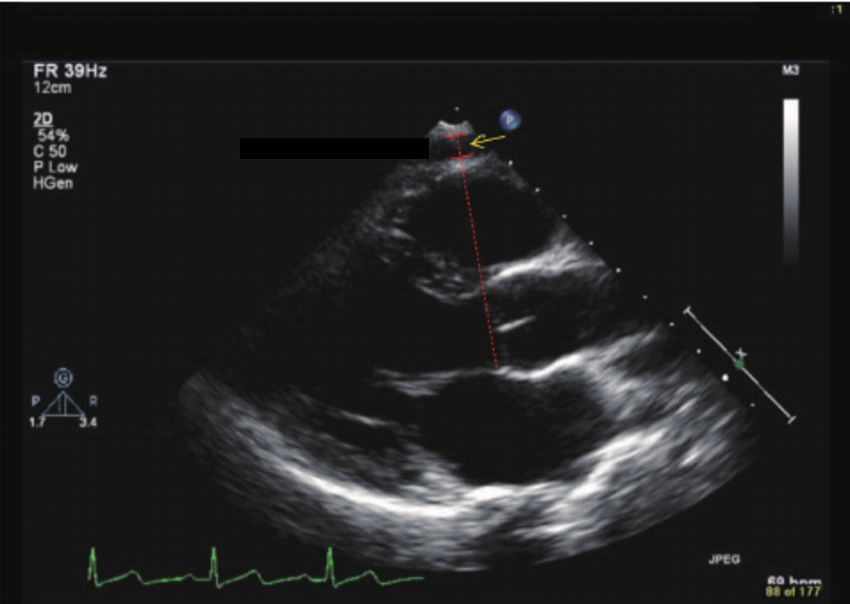 CorrectIncorrect
CorrectIncorrect -
Question 171 of 247
171. Question
What features of the cardiac probe make it better for visualizing cardiac structures? (Select all that apply)
CorrectIncorrect -
Question 172 of 247
172. Question
The presence of the descending thoracic aorta in the image above helps differentiate what findings? (Select all that apply)
CorrectIncorrect -
Question 173 of 247
173. Question
What findings differentiate a pericardial fat pad from a pericardial effusion? (Select all that apply)
CorrectIncorrect -
Question 174 of 247
174. Question
What are ultrasound findings of reduced LV systolic function?
CorrectIncorrect -
Question 175 of 247
175. Question
CorrectIncorrect -
Question 176 of 247
176. Question
True or False. Under normal physiological circumstances, the left ventricle is usually larger, longer, and with thicker walls than the right ventricle.
CorrectIncorrect -
Question 177 of 247
177. Question
When performing a focused cardiac ultrasound in a patient who survived a motor vehicle accident, you notice a pericardial effusion with right ventricular free wall collapse during diastole and right atrium inversion during systole. These findings are suggestive of which of the following diagnoses?
CorrectIncorrect -
Question 178 of 247
178. Question
In this parasternal short axis view of the heart using the cardiology convention, what pathological finding is present?
CorrectIncorrect -
Question 179 of 247
179. Question
What findings on focused cardiac POCUS can help identify a problem with forward flow to pulmonary vasculature?
CorrectIncorrect -
Question 180 of 247
180. Question
CorrectIncorrect -
Question 181 of 247
181. Question
CorrectIncorrect -
Question 182 of 247
182. Question
In a patient presenting with shortness of breath, what is the most likely cause given the cardiac ultrasound above in parasternal short axis?
CorrectIncorrect -
Question 183 of 247
183. Question
What characteristics make for more difficult IV access? (Select all that apply)
CorrectIncorrect -
Question 184 of 247
184. Question
The DIVA score (Difficult IV Access) is different from all of the following except?
CorrectIncorrect -
Question 185 of 247
185. Question
True or False. In the meta-analysis published by Stolz et al in the Journal Vascular Access in 2015, they found that ultrasound guided peripheral IV improved success rates compared to traditional techniques with a pooled odds ratio of 3.96.
CorrectIncorrect -
Question 186 of 247
186. Question
What benefits of ultrasound guided peripheral IV have been shown in the literature? (select all that apply)
CorrectIncorrect -
Question 187 of 247
187. Question
True or False. It has been demonstrated in the literature that emergency room nurses can readily obtain the skill.
CorrectIncorrect -
Question 188 of 247
188. Question
In the paper by Maiocco et al., published in Journal Nursing Care Quality, use of ultrasound guided for patients with difficult IV access demonstrated a decrease referral for PICC line placement in what percentage of patients?
CorrectIncorrect -
Question 189 of 247
189. Question
A randomized controlled trial published by Vinegrad et al. in the Annals of Emergency Medicine (July 2019) demonstrated that missed attempts at IV access were prevented. How many attempts were required to prevent 1 missed attempt in this paper?
CorrectIncorrect -
Question 190 of 247
190. Question
True or False. Ultrasound Guided peripheral IV placement has been endorsed by the agency for Healthcare Research and Quality in the United States.
CorrectIncorrect -
Question 191 of 247
191. Question
When should ultrasound guidance be used for peripheral IV access? Select all that apply.
CorrectIncorrect -
Question 192 of 247
192. Question
True or False. The literature has demonstrated that ultrasound guided IV access increases success and efficiency compared to the traditional approach and is an easily acquired skill.
CorrectIncorrect -
Question 193 of 247
193. Question
What probe is most appropriate for ultrasound guided IV access?
CorrectIncorrect -
Question 194 of 247
194. Question
Which of the following is the best transducer to use for ultrasound guided vascular access?
CorrectIncorrect -
Question 195 of 247
195. Question
True or False. The in-plane approach requires less scanning precision because the needle is easily visualized regardless of whether it lies directly with the thin plane of the ultrasound beam.
CorrectIncorrect -
Question 196 of 247
196. Question
Which larger veins are typically targeted for ultrasound guided peripheral IV placement in the upper arm? Select all that apply.
CorrectIncorrect -
Question 197 of 247
197. Question
The following are ideal vein characteristics for peripheral IV access except?
CorrectIncorrect -
Question 198 of 247
198. Question
True or False. IV access under ultrasound guidance can be achieved in the in-plane or out-of-plane approach.
CorrectIncorrect -
Question 199 of 247
199. Question
Ultrasound guided IV access should be done in which sequence?
CorrectIncorrect -
Question 200 of 247
200. Question
A patient with difficult IV access undergoes a US guided peripheral IV placement. What is demonstrated in the image above? Select all that apply.
CorrectIncorrect -
Question 201 of 247
201. Question
All ultrasound guided procedures are similar in that a target is identified with ultrasound guidance. The target vessel above is seen in what axis?
CorrectIncorrect -
Question 202 of 247
202. Question
CorrectIncorrect -
Question 203 of 247
203. Question
CorrectIncorrect -
Question 204 of 247
204. Question
CorrectIncorrect -
Question 205 of 247
205. Question
True or False. Like many pediatric procedures, it is helpful to introduce the ultrasound machine to the patient to try an avoid anxiety and stress response to the machine during the procedure.
CorrectIncorrect -
Question 206 of 247
206. Question
An advantage to ultrasound guided IV access is the ability to visualize and avoid sensitive structures like arteries and nerves. A nerve differs from a vein in that it appears more __________.
CorrectIncorrect -
Question 207 of 247
207. Question
It is important to differentiate arteries from veins. Arteries differ in that they are all of the following EXCEPT?
CorrectIncorrect -
Question 208 of 247
208. Question
When obtaining peripheral IV access using ultrasound guidance, the purpose of “mapping the vein” is to ________________.
CorrectIncorrect -
Question 209 of 247
209. Question
You are gathering supplies to place a peripheral IV in a teenage patient with a history of difficult IV access. After looking at the veins in the patient’s arm you decide to place an IV in the brachial vein of the upper arm. Which of the following catheters should you select to minimize the chance of dislodgement?
CorrectIncorrect -
Question 210 of 247
210. Question
True or False. Ultrasound guided peripheral IV placement is helpful to visualize the needle tip in order to avoid puncturing the posterior wall of the target vessel.
CorrectIncorrect -
Question 211 of 247
211. Question
In the paper published by Brenkert et al., in the American Journal of Emergency Medicine, the most sensitive location for a positive FAST exam in a pediatric patient is where?
CorrectIncorrect -
Question 212 of 247
212. Question
True or False. In hemodynamically stable children with blunt trauma, Holmes et al. published in JAMA in 2017 demonstrated that the FAST exam improved clinical care, ED length of stay, and decreased missed intra-abdominal injuries.
CorrectIncorrect -
Question 213 of 247
213. Question
In a paper published by Fox et al. in Academic Emergency Medicine in 2011, what is the sensitivity and specificity of a positive FAST exam in children to evaluate for hemoperitoneum?
CorrectIncorrect -
Question 214 of 247
214. Question
True or False. Similar to the adult literature on the FAST exam, the pediatric FAST exam is associated with a decreased door to operation time and no change in mortality.
CorrectIncorrect -
Question 215 of 247
215. Question
True or False. The most sensitive location for a positive FAST exam in the pediatric literature is in the pelvis.
CorrectIncorrect -
Question 216 of 247
216. Question
True or False. The most sensitive location for an adult positive FAST exam has been suggested in the pelvis unlike for a pediatric FAST exam which is in the right upper quadrant.
CorrectIncorrect -
Question 217 of 247
217. Question
In a paper published by Riera et al in Pediatric Emergency Care in 2021, a concerning FAST exam defined by presence of free fluid in the upper abdomen or moderate free fluid in pelvis showed what sensitivity and what specificity?
CorrectIncorrect -
Question 218 of 247
218. Question
True or False. The presence of hypotension does not impact the sensitivity of the FAST exam.
CorrectIncorrect -
Question 219 of 247
219. Question
CorrectIncorrect -
Question 220 of 247
220. Question
True or False. In a pediatric patient, the FAST exam must always be done in the same order beginning with the right upper quadrant.
CorrectIncorrect -
Question 221 of 247
221. Question
Morrison’s pouch refers to the space between what two organs?
CorrectIncorrect -
Question 222 of 247
222. Question
Select all the following views needed for a complete FAST exam:
CorrectIncorrect -
Question 223 of 247
223. Question
What transducers are used for the pediatric FAST exam?
CorrectIncorrect -
Question 224 of 247
224. Question
True or False. A full bladder aids in visualization of the pelvis by acting as an acoustic window.
CorrectIncorrect -
Question 225 of 247
225. Question
What views compromise the FAST Exam?
CorrectIncorrect -
Question 226 of 247
226. Question
CorrectIncorrect -
Question 227 of 247
227. Question
CorrectIncorrect -
Question 228 of 247
228. Question
CorrectIncorrect -
Question 229 of 247
229. Question
CorrectIncorrect -
Question 230 of 247
230. Question
CorrectIncorrect -
Question 231 of 247
231. Question
CorrectIncorrect -
Question 232 of 247
232. Question
The term “knuckles to the bed” refers to the way the hand must be positioned for better visualization of the left upper quadrant structures. What structure is visualized above using this pearl “knuckles to the bed?”
CorrectIncorrect -
Question 233 of 247
233. Question
CorrectIncorrect -
Question 234 of 247
234. Question
Visualization of pelvic and abdominal organs is obscured by bowel shadow. What organ in the pelvic view serves as an acoustic window to visualize deeper structures?
CorrectIncorrect -
Question 235 of 247
235. Question
CorrectIncorrect -
Question 236 of 247
236. Question
CorrectIncorrect -
Question 237 of 247
237. Question
CorrectIncorrect -
Question 238 of 247
238. Question
In the long axis of the pelvic view of the FAST performed on a pediatric patient who has undergone blunt abdominal trauma, what conclusion can be drawn in the image above?
CorrectIncorrect -
Question 239 of 247
239. Question
CorrectIncorrect -
Question 240 of 247
240. Question
True or False. It is important to visualize the caudal tip of both the liver and spleen.
CorrectIncorrect -
Question 241 of 247
241. Question
A 12 year old is involved in a motor vehicle accident and is found to have bruising around the abdomen. His blood pressure is 80/40. A FAST exam is performed in the field. What conclusion can be drawn from this view of the right upper quadrant?
CorrectIncorrect -
Question 242 of 247
242. Question
A 12 year old is involved in a motor vehicle accident and is found to have bruising around the abdomen. His blood pressure is 80/40. A FAST exam is performed in the field and the right upper quadrant is shown above. In which view would you most likely expect there to also be free fluid present?
CorrectIncorrect -
Question 243 of 247
243. Question
A 14 year old was involved in a bicycle accident where he fell forward hitting his abdomen on the arm pedals. He has bruising around the abdomen and is found dizzy and hypotensive. What conclusion can be drawn from this FAST exam of the right upper quadrant?
CorrectIncorrect -
Question 244 of 247
244. Question
The left upper quadrant view of the FAST exam is best visualized with the “knuckles to the bed”. What finding is present in the image above?
CorrectIncorrect -
Question 245 of 247
245. Question
In a pediatric patient who has undergone blunt abdominal trauma, what conclusion can be drawn from this transverse view of the pelvis?
CorrectIncorrect -
Question 246 of 247
246. Question
What findings are suggestive of cardiac tamponade? (Select all that apply)
CorrectIncorrect -
Question 247 of 247
247. Question
CorrectIncorrect
Contact form website
Contact form website
CONTACT US
Get in touch with our team to know more about GUSI.
PRE-REGISTRATION | POCUS FOR PRIMARY CARE IN PERSON COURSE OCT. 2025
Tentative Dates: October 17-18, 2025 | San Francisco, CA
PRE-REGISTRATION | POCUS FOR PRIMARY CARE IN PERSON COURSE APRIL 2025
Tentative Dates: April 2025 | San Francisco, CA
PRE-REGISTRATION | GUSI-OHSU Musculoskeletal Ultrasound for Primary Care & Joint Injection Cadaver Course
Tentative Dates: June 7-8, 2025, Portland, OR
PRE-REGISTRATION | OB POCUS ESSENTIALS COURSE JAN 30 - FEB 2
Jan 30th to Feb 2nd 2025
[elementor-template id=”3620″]


